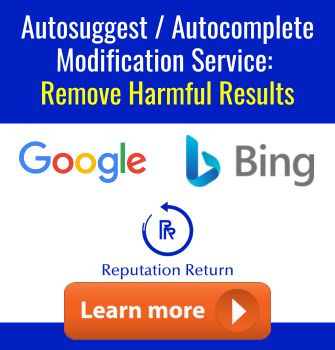Online reviews greatly influence how people see your chiropractic practice. With 49% of consumers trusting reviews as much as personal recommendations, it’s key to handle criticism well. Negative feedback is not just a problem—it’s a chance to show you care about your patients. Every response can change how people view you, by being open and professional.
Chiropractors have to balance their medical skills with their online image. A bad review can scare off 94% of people from visiting a 1-star business. But, 30% of patients will stay with you if you handle issues openly. This guide will help you turn criticism into chances, using data and empathy.
Key Takeaways
- Timely responses to chiropractor negative reviews boost perceived professionalism.
- 49% of patients value online reviews as much as friend referrals.
- Proactive handling criticism strengthens patient trust and loyalty.
- Addressing concerns publicly can improve ratings by 0.12 stars on average.
- Regular staff training reduces preventable review issues like scheduling errors.
The Impact of Online Reviews on Chiropractic Practices
Online reviews greatly influence how patients view your practice. Chiropractor negative reviews or patient complaints can quickly damage trust. Over 75% of patients start their search online, and 84% avoid practices with low ratings. This shows the need for quick action in managing your reputation.
- 77% of patients rely on reviews and search engines to choose providers.
- Practices with higher positive reviews see 20% better local search rankings.
- Responding to reviews within 24 hours boosts positive sentiment by 50%.
“A strong online reputation drives growth,” says our team. “Ignoring patient complaints risks losing 30% of possible inquiries.”
Platforms like Google (81.96% awareness) and Yelp (47.76%) are key for patient searches. Even one bad review can scare off 50% of possible patients. Yet, practices using tools like zHealth or Egg Health see 35-70% more inquiries and retention.
We guide chiropractors through these challenges. For example, real-time alerts help you quickly address chiropractor negative reviews, turning them into chances. Our clients have seen 25% more bookings after boosting their review strategy.
Want to understand how reviews affect your practice? Discover how your score impacts visibility. Book your free consultation today to protect your practice’s online presence.
Understanding Chiropractor Negative Reviews and Their Root Causes
Dealing with chiropractor negative reviews means finding out why they happen. Often, it’s because of bad communication, mistakes in how things are done, or not meeting what patients expect. By figuring out these reasons, clinics can work on making patients trust them more and be happier.

- Treatment effectiveness concerns
- Billing and insurance confusion
- Poor patient experience
- Misunderstandings about care outcomes
| Root Cause | Solution |
|---|---|
| Unclear billing policies | Transparent pricing guides and insurance FAQs |
| Unrealistic outcome expectations | Pre-treatment consultations outlining goals and timelines |
| Lack of follow-up | Post-visit check-ins and progress tracking |
Studies show that handling criticism well means being both understanding and accurate. For example, spinal manipulation is shown to help with back pain (2017 and 2021 studies). But, some patients might get upset if they don’t get better as fast as they hoped. It’s important to talk clearly about any risks, like rare problems with disks or nerves.
Reputation Return’s tools help spot trends in your chiropractor negative reviews, giving you useful information. Find out important questions to ask when looking for a partner. Our free consultation can help find the big problems causing criticism, so we can fix them. Let’s turn bad feedback into better care together.
Common Types of Criticism in Chiropractic Reviews
Online reviews often show the challenges chiropractors face. By understanding these patterns, practices can tackle patient complaints effectively. Below are the four most frequent categories seen in reviews today.
Treatment Effectiveness Complaints
Patients may feel let down if results don’t meet their hopes. For example, claims about curing chronic conditions beyond back pain are not supported by science. A 2012 review found spinal manipulation offers no meaningful benefit for most conditions outside musculoskeletal issues.
Billing and Insurance Issues
Confusion over costs or denied insurance claims can cause frustration. Federal audits revealed 80% of Medicare payments to chiropractors in 2016 were for non-essential procedures. This highlights gaps in billing transparency.
Patient Experience Concerns
Long wait times, inconsistent staff interactions, or poorly maintained facilities can lower satisfaction. These factors directly impact review ratings and patient retention.
Misunderstandings About Chiropractic Care
Public misconceptions persist. For example, 64% of patients in a 2024 survey believed chiropractors could treat allergies, though evidence doesn’t support this. Such gaps in understanding create unrealistic expectations.
| Type | Example | Solution |
|---|---|---|
| Treatment Effectiveness | “Cured migraines after one visit” | Set clear outcome expectations during intake |
| Billing | “Unexpected out-of-pocket costs” | Implement pre-visit cost estimations |
| Patient Experience | “Rude staff” | Train staff in empathy-driven communication |
| Misconceptions | “Chiropractor treated my diabetes” | Use patient education materials clarifying scope of practice |
Reputation Return helps practices analyze these patterns through free consultations. Our team addresses handling criticism with tailored strategies to rebuild trust. Schedule a confidential review of your practice’s online presence today.
Effective Response Strategies for Negative Patient Feedback
Handling criticism well is key for chiropractors to keep their reputation strong. By responding quickly and positively, you can turn bad reviews into chances to improve. Here are some effective ways to address feedback and keep trust.

Creating a Template While Maintaining Personalization
Use customizable templates to balance speed with care. For instance:
- Start with gratitude: “Thank you for sharing your experience.”
- Include specific details: “We’re sorry to hear about your wait time.”
- Offer solutions: “We’d like to discuss this further privately.”
The HEART Method for Addressing Complaints
Our framework ensures respectful, solution-focused communication:
- Hear: Acknowledge the concern without defensiveness.
- Empathize: Show understanding (“We’re sorry for the inconvenience”).
- Apologize: Take responsibility without admitting liability.
- Resolve: Propose actionable steps (e.g., scheduling a follow-up call).
- Thank: Express appreciation for their feedback.
Legal Considerations When Responding
Always prioritize HIPAA compliance and avoid public medical discussions. Never speculate about diagnoses or treatments. For example:
“We respect patient privacy and invite you to contact us directly to address your concerns.”
Moving Conversations Offline
When reviews involve sensitive issues, move the conversation to private channels. Here’s an example script:
“We value your feedback and would like to discuss this further via phone. Please email us at [[email protected]] to schedule a time.”
At Reputation Return, we help practices craft responses that align with legal standards and brand values. Schedule a free consultation today to learn how we can strengthen your digital reputation. Learn more about online reputation’s impact on healthcare careers.
Preventing Negative Reviews Through Proactive Patient Communication
Good communication is vital in keeping patients happy and avoiding bad reviews. By tackling issues early, you can turn problems into chances to build trust. Start by being clear about what treatment will do, how much it costs, and when it will happen. This helps avoid misunderstandings that can make patients unhappy.
- Use automated follow-ups after visits to identify issues before they escalate.
- Train staff to listen actively and resolve concerns in real time.
- Share educational resources about chiropractic care to align patient expectations with outcomes.
Regular check-ins via text or email help catch small problems before they grow. Tools like reminders and surveys show patients they’re heard. For instance, 73% of patients check reviews before choosing a provider. Positive interactions can greatly influence this choice.
By taking these steps, you can build loyalty and lower the chance of chiropractor negative reviews. Our free consultation helps you check your communication process. It makes sure you follow HIPAA and are open with your patients. Let’s make every interaction a chance to grow trust and reputation.
Reputation Repair: Rebuilding After Damaging Feedback
Reputation repair starts with understanding chiropractor negative reviews. A single bad review can affect 94% of people looking for a chiropractor. But, taking action can turn things around. We focus on empathy and action to regain trust.
First, check all online listings for patterns in complaints. Fix big problems like scheduling issues or poor communication, which 41% of patients mention. Use reputation repair strategies like:
- Issuing personalized responses to acknowledge concerns and offer resolution
- Encouraging satisfied patients to share positive experiences via email campaigns
- Implementing staff training to prevent recurring issues
When dealing with chiropractor negative reviews, start with private solutions. Then, make public responses using the HEART method: Humanize, Empathize, Acknowledge, Resolve, and Thank. Business.com says quick responses build trust, with 68% of people seeing businesses more positively.
We suggest checking your online presence and patient feedback every quarter. For tough cases, Reputation Return offers custom solutions, like content optimization and review tracking. A free consultation can help make a plan to boost your reputation and attract new patients. Let’s turn criticism into confidence.
Conclusion: Transforming Criticism into Growth Opportunities
Every negative review is a chance to get better and build trust. By seeing reputation repair as a constant effort, chiropractors can make the most of tough times. Handling criticism well can make your practice more credible.
Studies show that patients are happy with chiropractic care. But, feedback is key to always getting better. It helps in making services and patient relationships stronger.
Using proactive strategies, like quickly addressing concerns and making responses personal, is smart. The Agency for Health Research and Quality says spinal manipulation is a top treatment for back pain. This shows how important it is to listen to patients and improve care.
At Reputation Return, we work with chiropractors to create special plans. Our free consultation helps check your current approach. We use decades of research to help you grow. Let’s make your practice stronger in the digital world. Contact us today to start your journey.
FAQ
How can negative reviews affect my chiropractic practice?
Negative reviews can change how people see your practice. They might make others think twice about coming. But, they also give you a chance to learn and get better. This way, you can make patients happier and build trust.
What are the main causes of negative reviews for chiropractors?
Reviews often come from misunderstandings about treatment, poor communication, billing problems, and not knowing what chiropractic care is. Knowing why these issues happen helps you fix them and avoid future complaints.
How should I respond to critical reviews?
When you get a bad review, talk to the person personally. Use the HEART Method to listen, show you care, say sorry, fix the problem, and thank them. This helps calm things down and shows others you’re trustworthy.
Are there preventative measures I can implement to avoid negative reviews?
Yes, you can take steps to avoid bad reviews. Start by being clear about what you offer from the start. Make educational materials and ask for feedback often. This way, you can fix problems early and keep patients happy.
What steps should I take after receiving a damaging review?
First, figure out how big of a deal the review is. Then, work on fixing the problem. This might mean talking to unhappy patients privately, asking happy ones to share their good experiences, and making a plan to improve your reputation.
How can I effectively manage my online reputation?
Keep an eye on what people say about you online. Use services that help you respond and manage your reputation. It’s also a good idea to get advice from experts who know your field well.
Can Reputation Return assist with my reputation management needs?
Yes, Reputation Return is here to help! We focus on healthcare, including chiropractors, with our reputation management services. Our free consultations offer tailored advice to tackle your specific challenges.















Leave a Reply